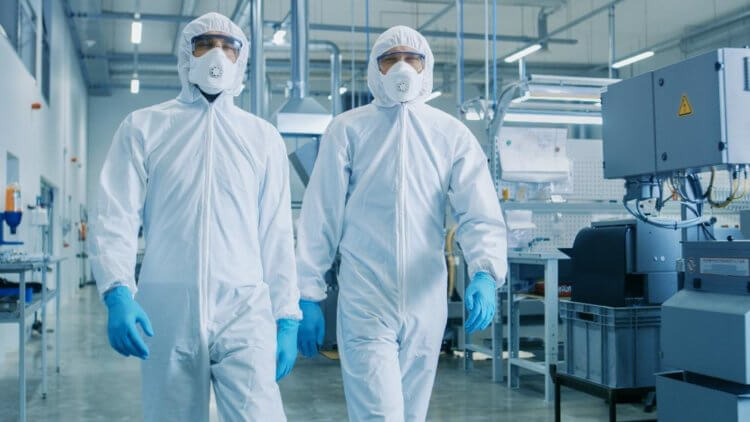 In the contract packaging process, some products require additional precautions to ensure that they are handled properly and that the package contents are not compromised. Some products need to be packaged in an isolated area within a facility known as a “clean room.”
In the contract packaging process, some products require additional precautions to ensure that they are handled properly and that the package contents are not compromised. Some products need to be packaged in an isolated area within a facility known as a “clean room.”
A clean room is a highly controlled environment that can facilitate the packaging of items that are sensitive to contamination. This doesn’t necessarily mean sterilization but does mean a designated set of protocols must be followed according to specific product needs. Typically these environments must adhere to strict guidelines pertaining to the room itself and the process in which it is packaged along with the materials that the product is being packaged.
Clean Room Requirements
The requirements for a clean environment can differ based on the product type. These requirements depend on the certifying entity and the guidelines set forth by the product retailer. To make sure the guidelines for the cleanroom are being followed, production plants are routinely subject to audits.
One of the most important requirements for all cleanrooms is ensuring they have the proper equipment installed. For example, a cleanroom must have a specialized reverse air flow filtration system. This air filtration system is completely separate from that of the rest of the packaging plant. It serves to help control the environment by keeping it free of dangerous or unwanted elements in the air. Along with the air filtration, clean rooms have monitored temperature and humidity control in place.
By regulating these conditions in the room, both temperature-sensitive and hygroscopic products can be packaged with minimal risk of contamination. Clean rooms are also helpful when dealing with products that contain allergens, such as peanuts or soy. There are procedures for handling allergens that are carefully monitored and documented.
Clean Room Applications
Products that you would typically see utilizing a clean room for product packaging would be Medical Supplies, Pharmaceuticals, OTC products, primary food packaging, hospital wearables such as gowns and masks, Neonatal products, and more.
It may be good to note that a cleanroom is rated for medical and pharma applications (Ex: Class 100,000, class 10,000, and class 1,000). This indicated the number of dust particles measured per cubic inch. For primary food filling, however, the production environment is not rated, per se, by dust particles. Still, it has other requirements spelled out by the industry governing parties such as AIB (Association of international Baking), Cookes and Thurber, and SQF, to name a few.
Clean Room Specifications
Along with the room itself, the cleanroom specialists must adhere to product-specific regulations. This could include but not be limited to wearing protective garments, wearing sterile gloves, and/or wearing eye protection if necessary. The specialists must undergo training to educate them on proper procedures and quality control protocol. They are also trained in sterilized packaging techniques, cleaning requirements, and system-monitoring practices. Fiber is a huge source of dust, so corrugated boxes or cartons must be stored outside of any cleanroom.
Using approved equipment
Another important element in the packaging in a clean environment is using appropriate equipment and furniture to ensure they do not generate micros or dust. Stainless steel tables are often required so that regular cleaning can take place without any fear of metal oxidation. Floors must not have deteriorated, and ceilings must be able to handle water for complete washdowns as dictated by certain projects. Light fixtures must also be special and be waterproof and shatterproof.

Before global cleanroom classifications and standards were adopted by the International Standards Organization, the U.S. General Service Administration’s standards were applied virtually worldwide.